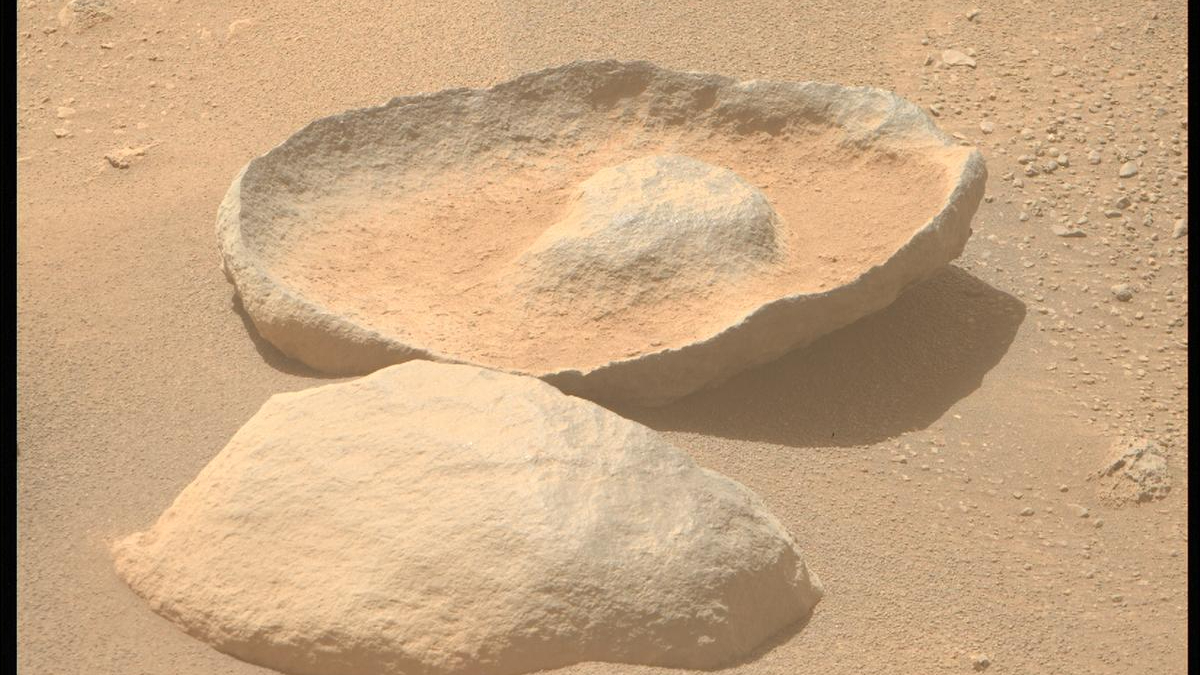Perseverance rover spies 'avocado' rock on Mars (photo)
The Mars 'avocado' is the latest in a long line of Red Planet rocks that look like things.

NASA's Perseverance Mars rover snapped a new photo of a Red Planet rock that looks a lot like an avocado.
Since landing on Mars on Feb. 18, 2021, the rover has traversed the planet's Jezero Crater in search of signs of ancient life. Along its journey, the robotic rover has encountered some intriguing Red Planet features.
Among them is a pair of rocks, photographed on Sept. 8, that resembles a ripe avocado cut in half. One rounded half lies upside down in the foreground of the image, while the other half appears to have a distinct pit in its center. The rugged surface of the rock even mirrors the dimpled, leathery texture of an avocado peel.
Related: Perseverance Mars rover spots 'shark fin' and 'crab claw' rocks on Red Planet (photos)
The recent photo was taken using Perseverance's Mastcam-Z camera, which includes a pair of cameras located high on the rover's head-like mast. It was captured on Perseverance's 907th Marian day, or sol, on the Red Planet. (One sol is slightly longer an Earth day — about 24 hours and 40 minutes.)
With the help of the Mars helicopter Ingenuity, which acts as a scout for the rover, Perseverance is exploring the 28-mile-wide (45 kilometers) Jezero Crater, which hosted a big lake and a river delta billions of years ago. Among the rover's key goals is to characterize the ancient environment and collect samples that will be returned to Earth by future missions.
This recent rocky find adds to the rover's growing collection of fun-shaped rocks. In August, the rover snapped a photo of a shark-fin-looking outcrop and an accompanying crab-claw-like boulder. Perseverance also spotted a donut-shaped rock with a hole in its center in June, which scientists said might be remnants of a large meteorite that fell to the Red Planet.
Get the Space.com Newsletter
Breaking space news, the latest updates on rocket launches, skywatching events and more!
These types of images are examples of the phenomenon known as pareidolia, which describes the human brain's tendency to impose a familiar pattern on otherwise random visual data.
Join our Space Forums to keep talking space on the latest missions, night sky and more! And if you have a news tip, correction or comment, let us know at: community@space.com.

Samantha Mathewson joined Space.com as an intern in the summer of 2016. She received a B.A. in Journalism and Environmental Science at the University of New Haven, in Connecticut. Previously, her work has been published in Nature World News. When not writing or reading about science, Samantha enjoys traveling to new places and taking photos! You can follow her on Twitter @Sam_Ashley13.









